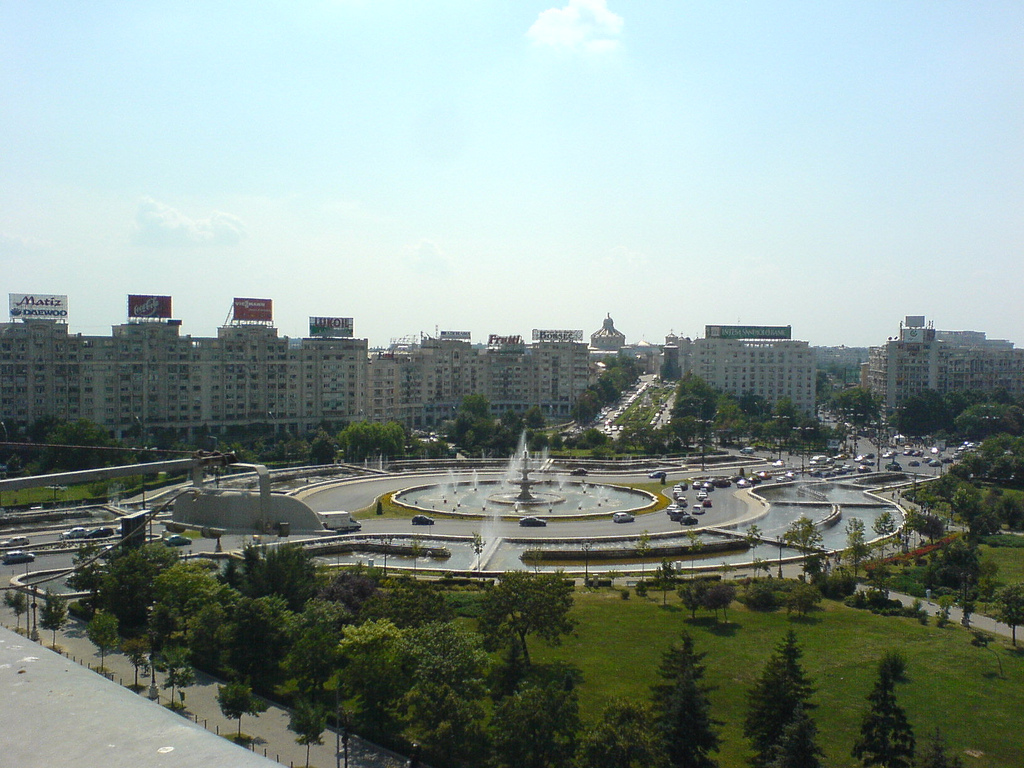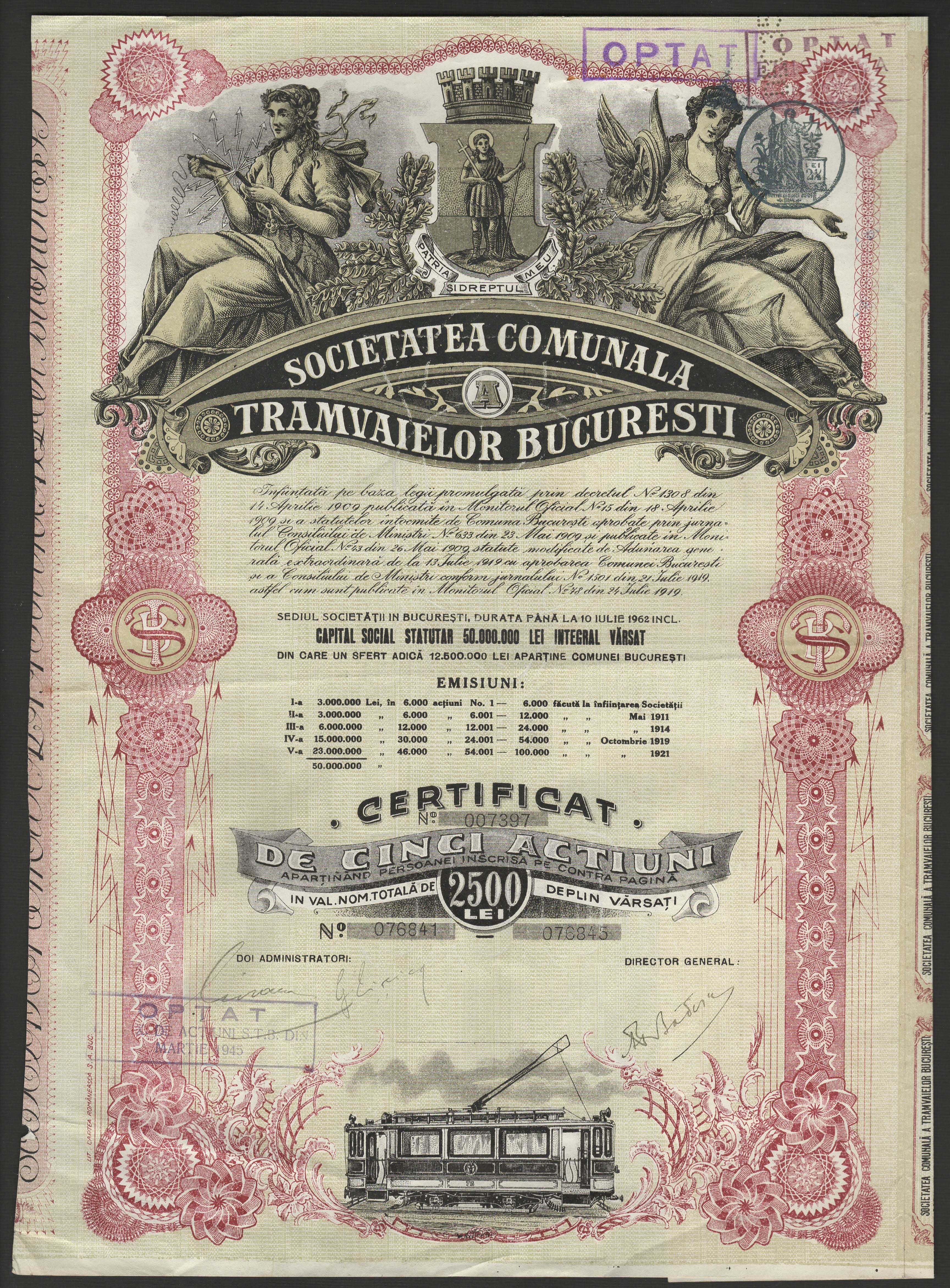|
Piața Unirii
Piața Unirii (; ''Unification Square'' or ''Union Square'' in English) is one of the largest squares in central Bucharest, Romania, located in the center of the city where Sectors 1, 2, 3, and 4 meet. Part of the Civic Centre, it is bisected by Unirii Boulevard, originally built during the Communist era as the Boulevard of the Victory of Socialism, and renamed after the Romanian Revolution. The square is a significant transport hub, containing the Piața Unirii metro station and a major interchange for STB buses; there is also a tram terminal near the southwest corner. The Unirea Shopping Center, the Cocor department store and a large taxi rank are located on the east side of this square, while Hanul lui Manuc is on the north side, near the northeast corner. The centre of the square boasts a small park and fountains which are particularly popular with commuters and passers-by in the torrid summer months. There were plans to build the Romanian National Salvation Cathedral on ... [...More Info...] [...Related Items...] OR: [Wikipedia] [Google] [Baidu] |
Unirea Shopping Center
Unirea Shopping Center is a chain of two large shopping centres, the initial one being located in Unirii Square, Bucharest, Romania, and the second one in Brașov. Bucharest Opened in 1976 and enlarged in 1989, it was the largest department store in Communist Romania. It was converted into a shopping centre during the 1990s. The complex has a total area of and 1,000 parking spaces. The closest metro station to the shopping centre is Piața Unirii metro station. Critical reception In recent years many empty spaces have appeared in the Unirea shopping centre in Bucharest where once main-street and many less well known brands had their outlets. The state of the building has deteriorated gravely, which may lead to more vacancies in the near future. For occasional Romanian clients and foreign tourists it seems already to be clear that when the owner of the building does not invest in redevelopment (e.g., by reduction of shop floor capacity and modernisation, combined with creation ... [...More Info...] [...Related Items...] OR: [Wikipedia] [Google] [Baidu] |
Dâmbovița (river)
The Dâmbovița () is a river in Romania. It has its sources on the Curmătura Oticului, a mountain pass that separates the Iezer Mountains from the Făgăraș Mountains proper. It passes through Bucharest and flows into the river Argeș near Budești, in Călărași County. Its length is and its basin size is . Dâmbovița County is named after the river. Name The name of the Dâmbovița is of Slavic origin, derived from Common Slavic '' dǫbŭ'' (дѫбъ), meaning " oak", as it once flowed through the oak forests of the Wallachian Plain. Its upper course, upstream from the Valea Vladului, is also called ''Valea Boarcășului''. Dâmbovița in Bucharest For centuries, Dâmbovița was the main source of drinking water for the city of Bucharest. While there were a few dozen water wells, most of the water in Bucharest was distributed by water-carriers.Ștefan Ionescu, ''Bucureștii în vremea fanarioților'', Editura Dacia, Cluj, 1974. p. 28-30 Bucharest folklore menti ... [...More Info...] [...Related Items...] OR: [Wikipedia] [Google] [Baidu] |
National Library Of Romania
The National Library of Romania ( ro, Biblioteca Națională a României) is the national library of Romania. It is intended to be the repository of all that is published in Romania. The construction cost was €110 million. History The roots of the library can be found in Saint Sava College library. Saint Sava College library was opened in 1859 when 1000 French volumes were archived. After the 1859 Union, the library was officially made the national library (Biblioteca Națională, later Biblioteca Centrală - National and Central library, respectively). In 1864 the library was renamed Central Library of the State (Biblioteca Centrală a Statului). In 1901 all the collections were ceded to the Romanian Academy Library. As a result, from 1901 to 1955, the Romanian Academy Library was the national library. In 1955, the State Central library was organised, having the attributes of a national library. In 1989, after the collapse of the communist regime, the State Central Library w ... [...More Info...] [...Related Items...] OR: [Wikipedia] [Google] [Baidu] |
Romanian National Salvation Cathedral
The People's Salvation Cathedral ( ro, Catedrala Mântuirii Neamului), also known as the National Cathedral ( ro, Catedrala Națională, link=no), is an Eastern Orthodox cathedral under construction in Bucharest to serve as the patriarchal cathedral of the Romanian Orthodox Church. It is located in central Bucharest on Spirea's Hill (Arsenal Square), facing the same courtyard as the Palace of Parliament which is the heaviest building in the world, the cathedral having a tenth of its weight and about 24% of its volume. Situated behind the Palace of Parliament, this will make it 50 metres taller than the Palace, and will help to make the cathedral an iconic landmark in the city. The People's Salvation Cathedral is above sea level, and at height (ground-cross), holds a dominant position in Bucharest's cityscape, being visible from all approaches to the city. It is the tallest and largest Eastern Orthodox church building by volume, and area,Saint Isaac's Cathedral in Saint Peters ... [...More Info...] [...Related Items...] OR: [Wikipedia] [Google] [Baidu] |
Hanul Lui Manuc
Manuc's Inn ( ro, Hanul lui Manuc, ) is the oldest operating hotel building in Bucharest, Romania. It also houses a popular restaurant, several bars, a coffee-house, and (facing the street) several stores and an extensive bar. Its massive, multiply balconied courtyard hosted many performances and fairs and was a popular place for Romanian Television crews to shoot folkloric performances. The hotel and restaurant were refurbished in 2007. , 2009-10. Accessed online 2010-02-12. Location The building is located at 62–64 stra ...[...More Info...] [...Related Items...] OR: [Wikipedia] [Google] [Baidu] |
Taxicab Stand
A taxicab stand (also called taxi rank, cab stand, taxi stand, cab rank, or hack stand) is a queue area on a street or on private property where taxicabs line up to wait for passengers. Operation Stands are normally located at high-traffic locations such as airports, hotel driveways, railway stations, subway stations, bus depots, ferry terminals, shopping centres, and major street intersections. Usually stands are marked by simple painted signs. Stands generally work as a first-come, first-served queue, so that the first taxicab to arrive on the stand (the one at the front of the line) serves the first passenger to arrive, and as the first taxicab leaves, each taxicab behind it moves ahead one spot, with the last taxicab to arrive taking the last spot. In the Republic of Ireland an intending passenger is entitled to choose any taxicab that is available for hire at an appointed taxi stand. The Commission for Taxi Regulation has deemed that the customer has the right to c ... [...More Info...] [...Related Items...] OR: [Wikipedia] [Google] [Baidu] |
Societatea De Transport București
'' Societatea de Transport București (STB; English: Bucharest Transit Corporation) is one of the main public transit operators in Bucharest, Romania, owned by the Municipality of Bucharest. From 1990 to 2018, the company had a different legal status and was known as the ''Regia Autonomă de Transport București'' (''RATB''). STB operates a complex network of buses, trolleybuses, light rail and trams – in fact, STB operates all public transport except the Bucharest Metro, which is managed by Metrorex. STB has an average of approximately 1,180,000 daily individual rides of which 540,000 with buses, 520,000 with light rail and trams, and 120,000 with trolleybuses. Overview While owned entirely by the City Council, STB is an autonomous company. On 13 September 2018, it became a public company (Romanian: ''Societate pe acțiuni'') and adopted its current name (not to be confused with the pre-WWII name ''Societatea de Tramvaie București''). The Municipality of Bucharest is th ... [...More Info...] [...Related Items...] OR: [Wikipedia] [Google] [Baidu] |
Bucharest
Bucharest ( , ; ro, București ) is the capital and largest city of Romania, as well as its cultural, industrial, and financial centre. It is located in the southeast of the country, on the banks of the Dâmbovița River, less than north of the Danube River and the Bulgarian border. Bucharest was first mentioned in documents in 1459. The city became the capital of Romania in 1862 and is the centre of Romanian media, culture, and art. Its architecture is a mix of historical (mostly Eclectic, but also Neoclassical and Art Nouveau), interbellum ( Bauhaus, Art Deco and Romanian Revival architecture), socialist era, and modern. In the period between the two World Wars, the city's elegant architecture and the sophistication of its elite earned Bucharest the nickname of 'Paris of the East' ( ro, Parisul Estului) or 'Little Paris' ( ro, Micul Paris). Although buildings and districts in the historic city centre were heavily damaged or destroyed by war, earthquakes, and even Ni ... [...More Info...] [...Related Items...] OR: [Wikipedia] [Google] [Baidu] |
Piața Unirii Metro Station
Piața Unirii (''Union Square'') is a major metro station in Bucharest. It is located in the southern part of the city centre, in Union Square (''Piața Unirii'' in Romanian), and it is one of the busiest stations of the Bucharest Metro. It is made up of two terminals, one on the M1 and M3 lines and another on the M2 line, linked by a passage. The M1/M3 station was opened on 19 November 1979 as part of the inaugural section of Bucharest Metro, between Semănătoarea and Timpuri Noi. The M2 station was opened on 24 January 1986 as part of the inaugural section of the line, from Piața Unirii to Depoul IMGB. On 24 October 1987, the line was extended north to Pipera. A McDonald's fast-food restaurant is located in the vestibule above the M2 line platform. The station also features kiosks selling from newspapers to stationery, bakeries, a diversity of shops, public phones, a large transport police station (with a list of mugshots at the entrance) and mobile-phone servicing point ... [...More Info...] [...Related Items...] OR: [Wikipedia] [Google] [Baidu] |
Romanian Revolution
The Romanian Revolution ( ro, Revoluția Română), also known as the Christmas Revolution ( ro, Revoluția de Crăciun), was a period of violent civil unrest in Romania during December 1989 as a part of the Revolutions of 1989 that occurred in several countries around the world. The Romanian Revolution started in the city of Timișoara and soon spread throughout the country, ultimately culminating in the drumhead trial and execution of longtime Romanian Communist Party (PCR) General Secretary Nicolae Ceaușescu and his wife Elena Ceaușescu, Elena, and the end of 42 years of Communist rule in Romania. It was also the last removal of a Marxist–Leninist government in a Warsaw Pact country during the events of 1989, and the only one that violently overthrew a country's leadership and executed its leader; according to estimates, over one thousand people died and thousands more were injured. Following World War II, Romania was placed under the Soviet Empire, Soviet sphere of i ... [...More Info...] [...Related Items...] OR: [Wikipedia] [Google] [Baidu] |




.jpg)
